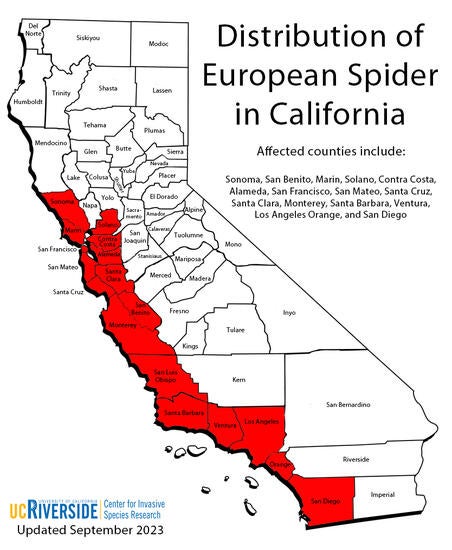European Spider, Steatoda nobilis Theridiidae
The Situation: In 2011 in Ventura County, while searching for the non-native and invasive brown widow spider, Latrodectus geometricus, a discovery was made of a large brown spider that was not recognized as being part of the southern California spider fauna. Several specimens were collected and brought back to the lab for identification. They turned out to be a European spider, Steatoda nobilis, which is the first documentation of this spider in the Western Hemisphere.
Distribution: European Spider is known from England, Spain and other portions of western Europe. In California, it was collected in Monterey, San Diego, Alameda and Ventura counties. It can be very common where it is found. Speculation is that it might have been introduced into California via the U.S. Naval base in Port Hueneme.
Identification: There are many spiders of the genus Steatoda in California but none get as large as S. nobilis. Previously the largest Steatoda in California was the false black widow, S. grossa, which is slightly smaller than a mature black widow, is chocolate brown or dark plum in color and may have a small white or tan band on the front surface of its abdomen. In contrast, S. nobilis is about the size of a mature black widow spider, and has a thick white or tan band on the front part of the abdomen and on the back in many specimens, is a white pattern that looks like a house with a domed or peaked roof pointing toward the front of the body, often with two dark “windows” in the body of the house (Figure 1). However, in some of the mature specimens, this house pattern is lost such that the only portion that is retained is the roof (Figure 2). Males are somewhat similar except that they have smaller abdomens and may have more white design on their bodies (Figure 3).
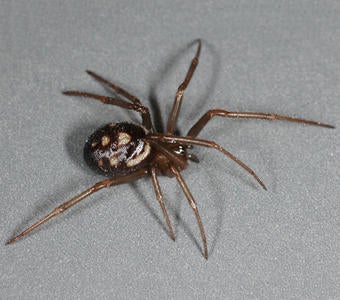
|
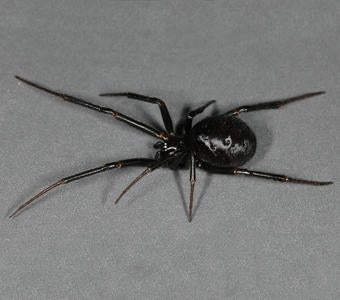
|
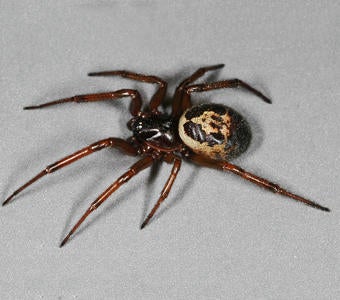
|
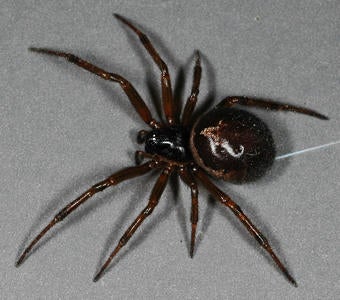
|
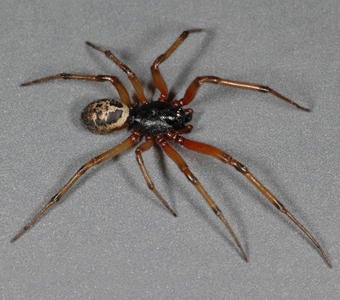
|
European Spider |
vs |
False Black Widow Spider |
| Steatoda nobilis | Steatoda grossa | |
| Abdomen with houselike pattern on back | Abdomen usually all brown | |
| If there is no large pattern on the back, there will be a small forward pointing white arrow near the front (fig. 4) | If there is a pattern on back, it will be rounded spots | |
| Legs are reddish brown | Legs are brown |
Damage: The spiders are large but there is only one recorded bite from England which had very minor effects. This spider IS NOT considered to have any significant venom toxicity.
This information was published in the following article:
Vetter, R. S., and M. K. Rust. 2012. A large European combfoot spider, Steatoda nobilis (Thorell 1875) (Araneae: Theridiidae), newly established in Ventura County, California. Pan-Pacific Entomologist 88:92-97. Contact Rick Vetter for a a PDF.
Center for Invasive Species Research, University of California Riverside
Text and by: Richard S. Vetter, Department of Entomology, University of California Riverside
Photos by and Richard S. Vetter
Richard S. Vetter, Staff Research Associate
rick.vetter@ucr.edu
